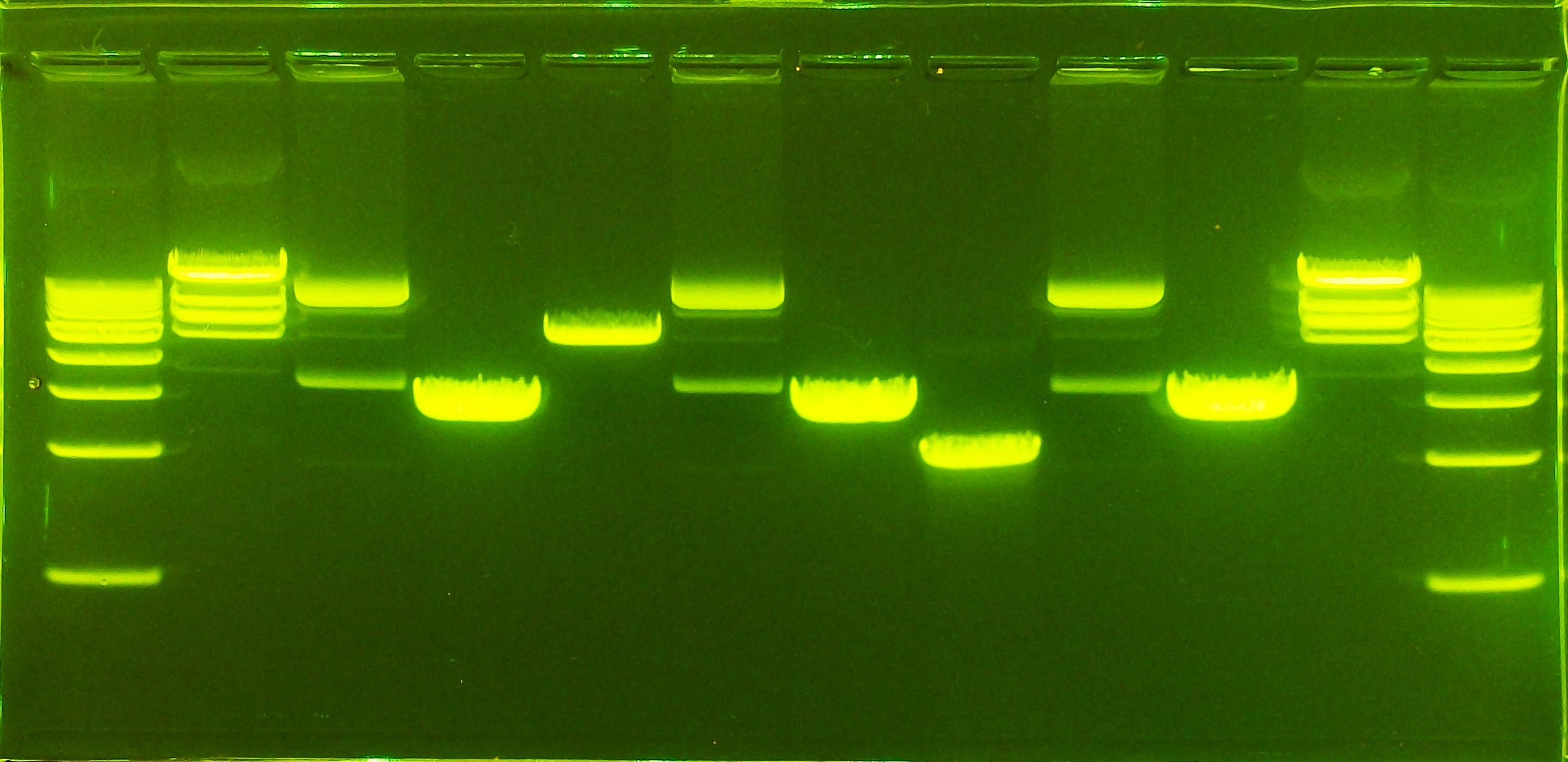Looking at a sample of purple dye, how can you know if it is really purple? Could it be a mixture of blue and red dyes? Electrophoresis is a technique used in many areas of science to analyze and separate samples by applying a constant electric field across a separation matrix. Biologists or forensic scientists can use this technology to separate mixtures of DNA, RNA, proteins, or dyes into individual components based on size and electrical charge. A tracking dye, or loading dye, is usually included with the sample to make it easier to see whether the sample has been loaded and to judge how the separation is progressing.
The gel used in gel electrophoresis is a sieving matrix through which particles travel. Gels can be made from different substances depending on what is being separated (DNA, RNA, proteins, etc.), but it should be both conductive and have the ability to form a uniform matrix with appropriate pore sizes. The matrix is like a sieve or colander: if the holes are too big or too small it won’t work very well. One of the most commonly used and effective reagents for DNA separation is agarose. Agarose gels are usually cast in a tray with molten (melted) agarose. A comb is placed while the agarose is molten and then removed after the gel solidifies to create wells in which to load samples. A DNA stain is used to enable visualization of the DNA.
As an electric field is applied to the agarose gel, the particles in the wells will begin to move. The direction that particles move depends on their charge. DNA has a negative charge, so it will be attracted to a positive electrode. Some dyes and other particles have a positive charge and will thus migrate toward a negative electrode. The relative speed of migration is determined mainly by the size of the particle but also by the strength of the particle’s charge. Like an obstacle course, larger particles have more difficulty passing through the matrix with their bulk and do not travel very far, while shorter and smaller ones can maneuver much more easily and therefore travel faster and farther.
Sometimes a particle with a bigger size migrates faster than a smaller particle. This can happen if the strength of the charge of the larger particle is significantly stronger by comparison to the charge on the smaller particle. An example of this phenomenon is the loading dye Orange G. This dye often runs faster than the smaller DNA fragments and other relatively small particles because it is more negatively charged and has a stronger attraction to the electrode than the smaller particles.
Both particle size and electrical charge can affect the results of gel electrophoresis experiments. In general however, gel electrophoresis separates charged particles and fragments by size.



